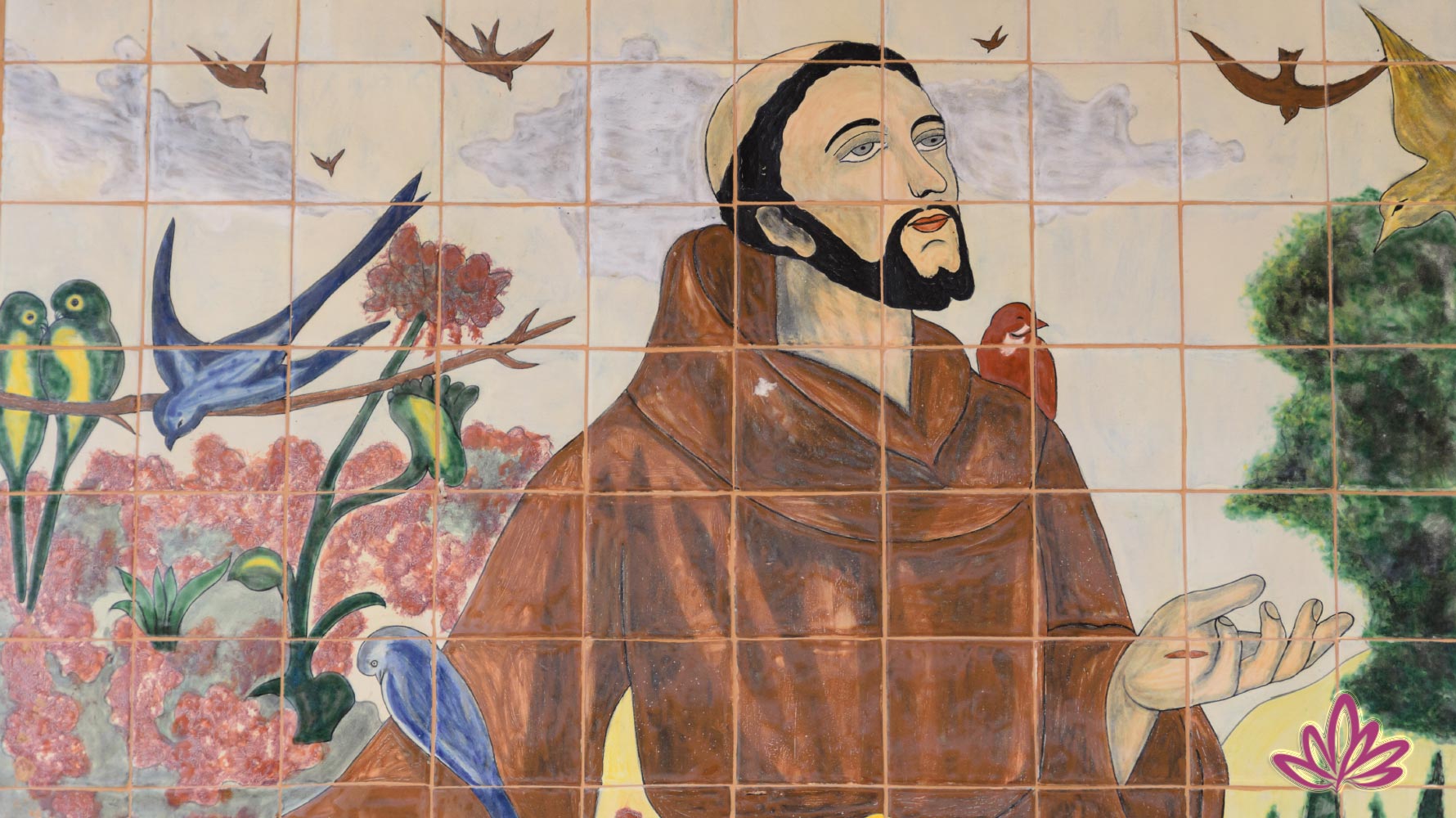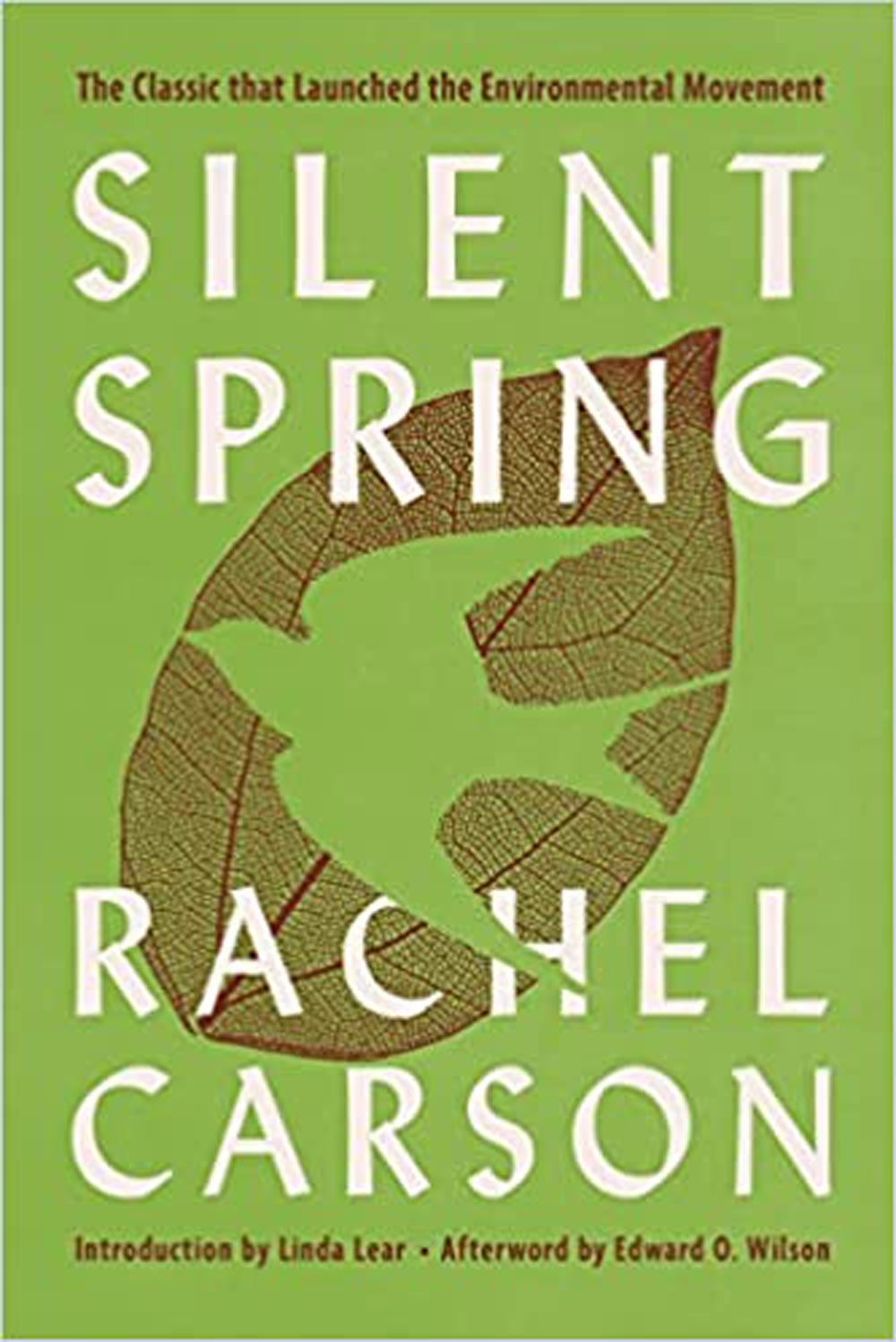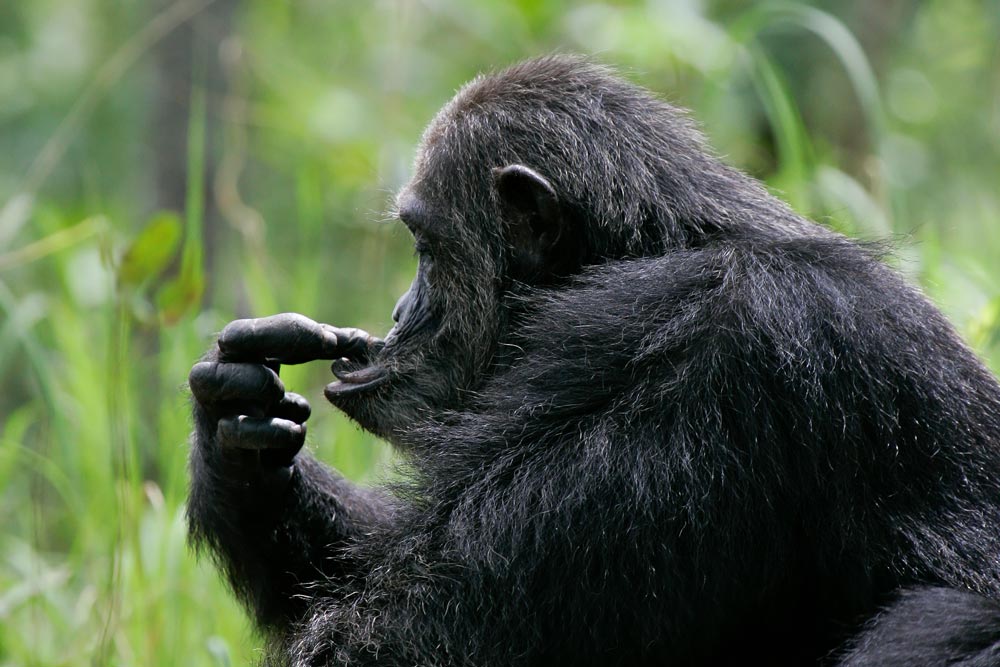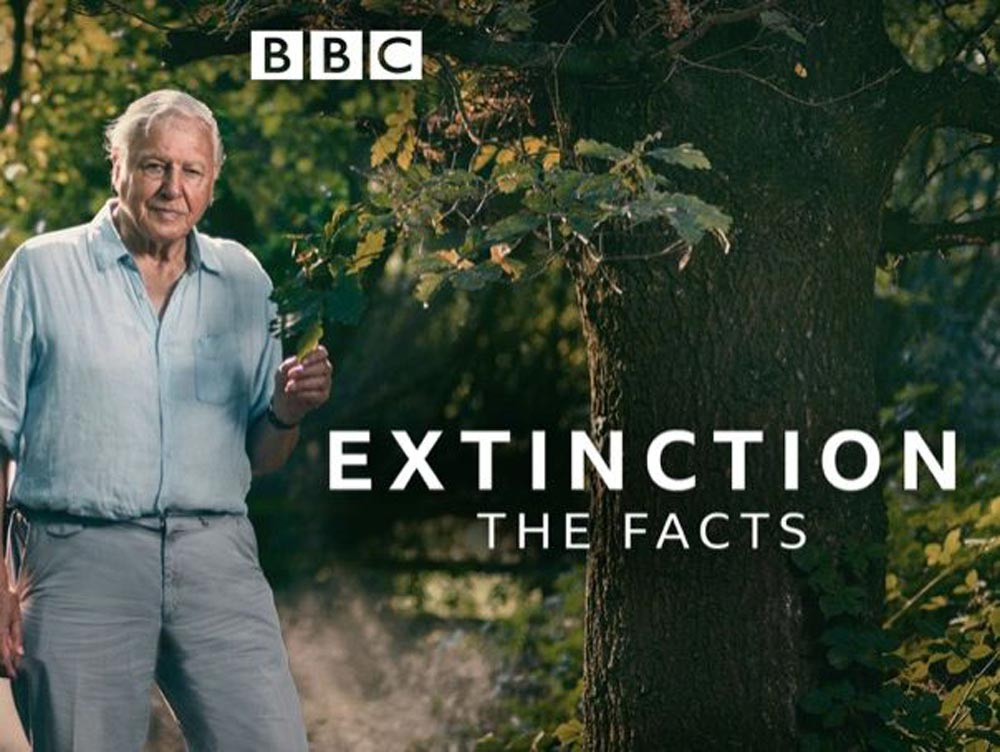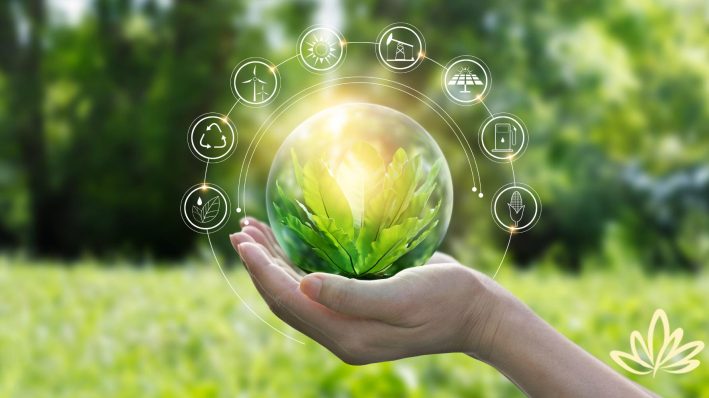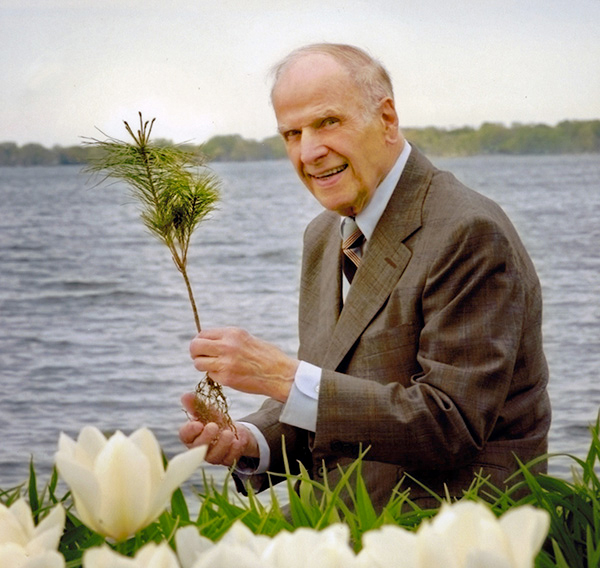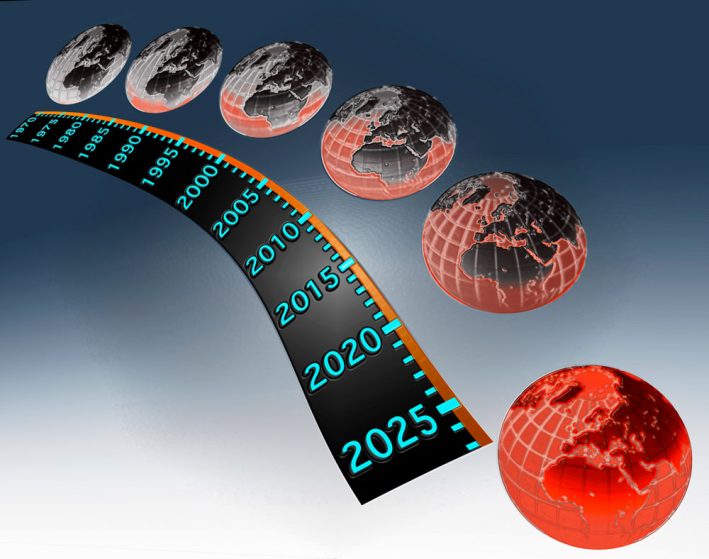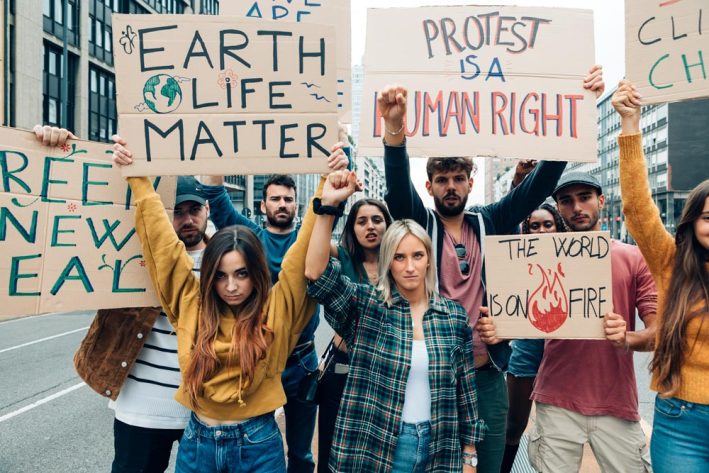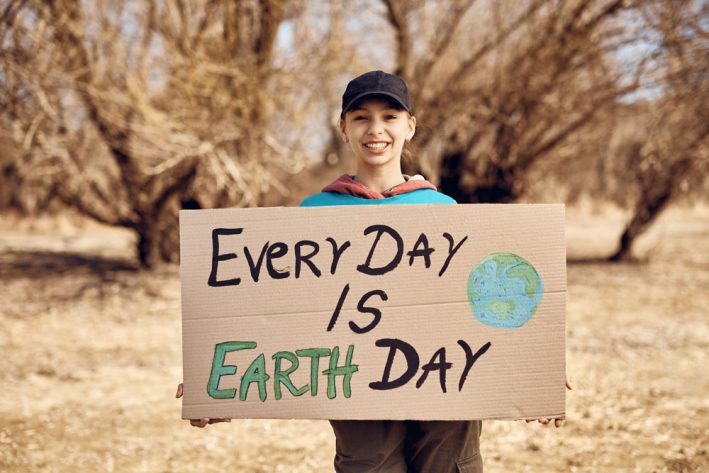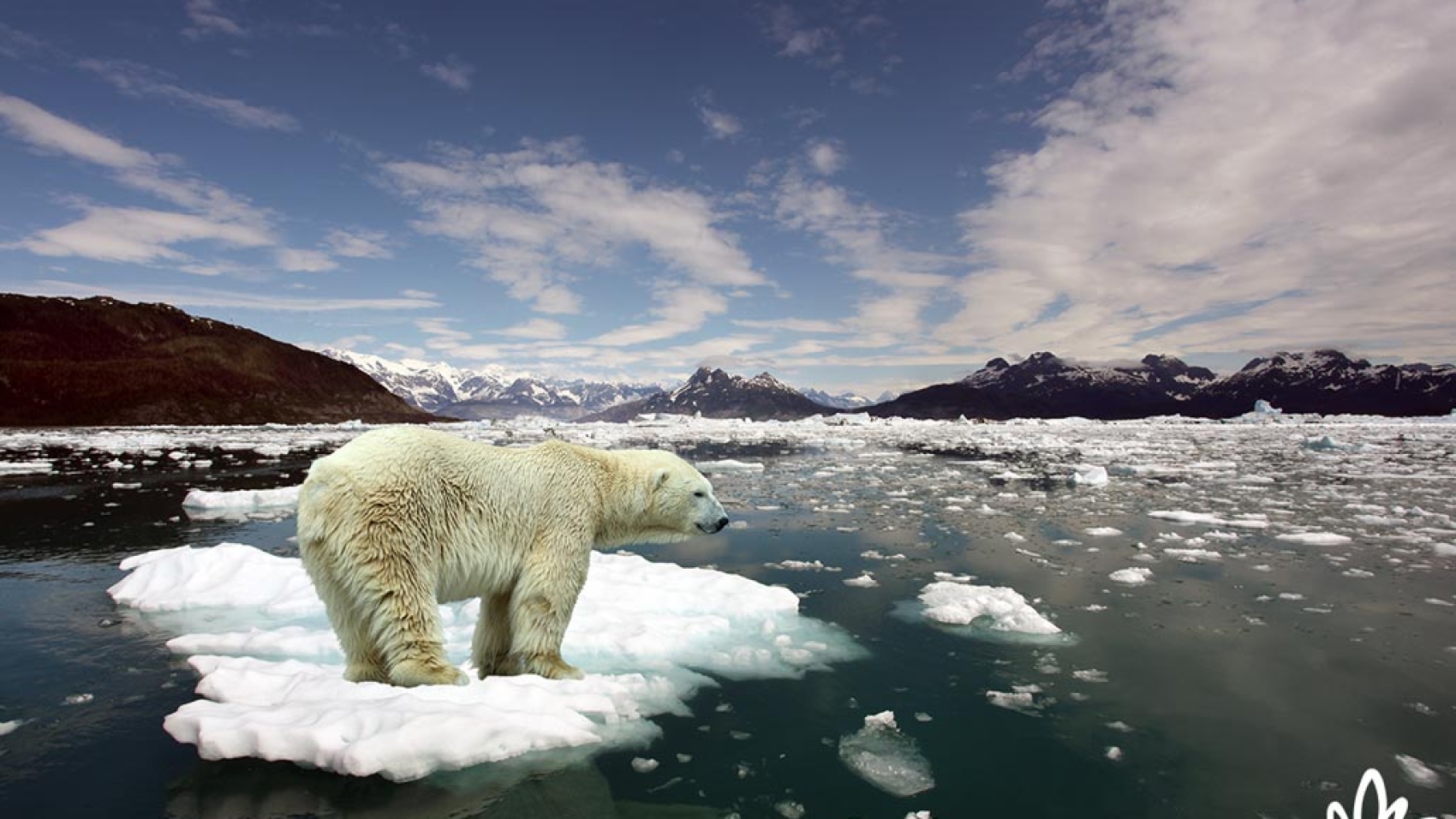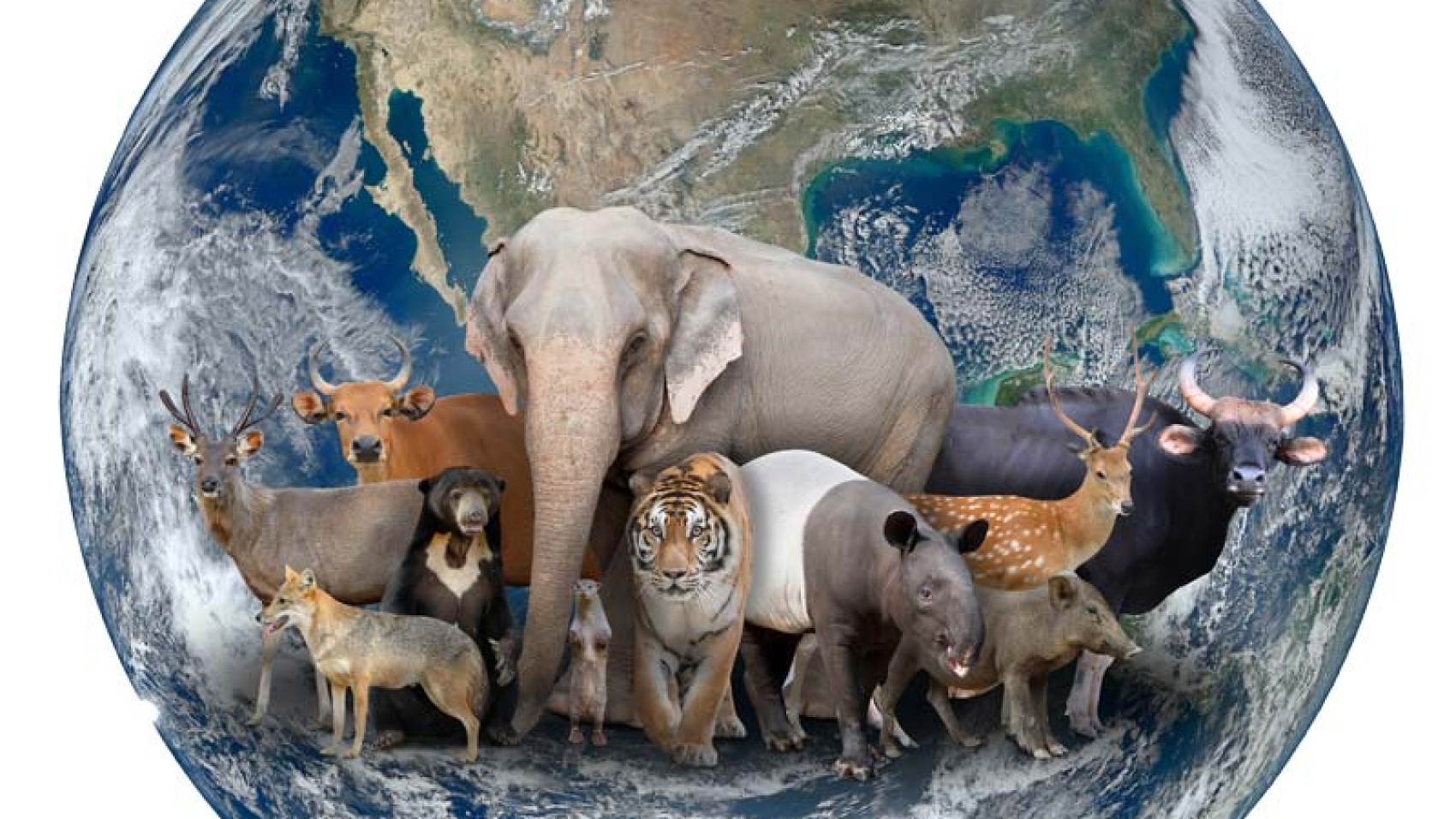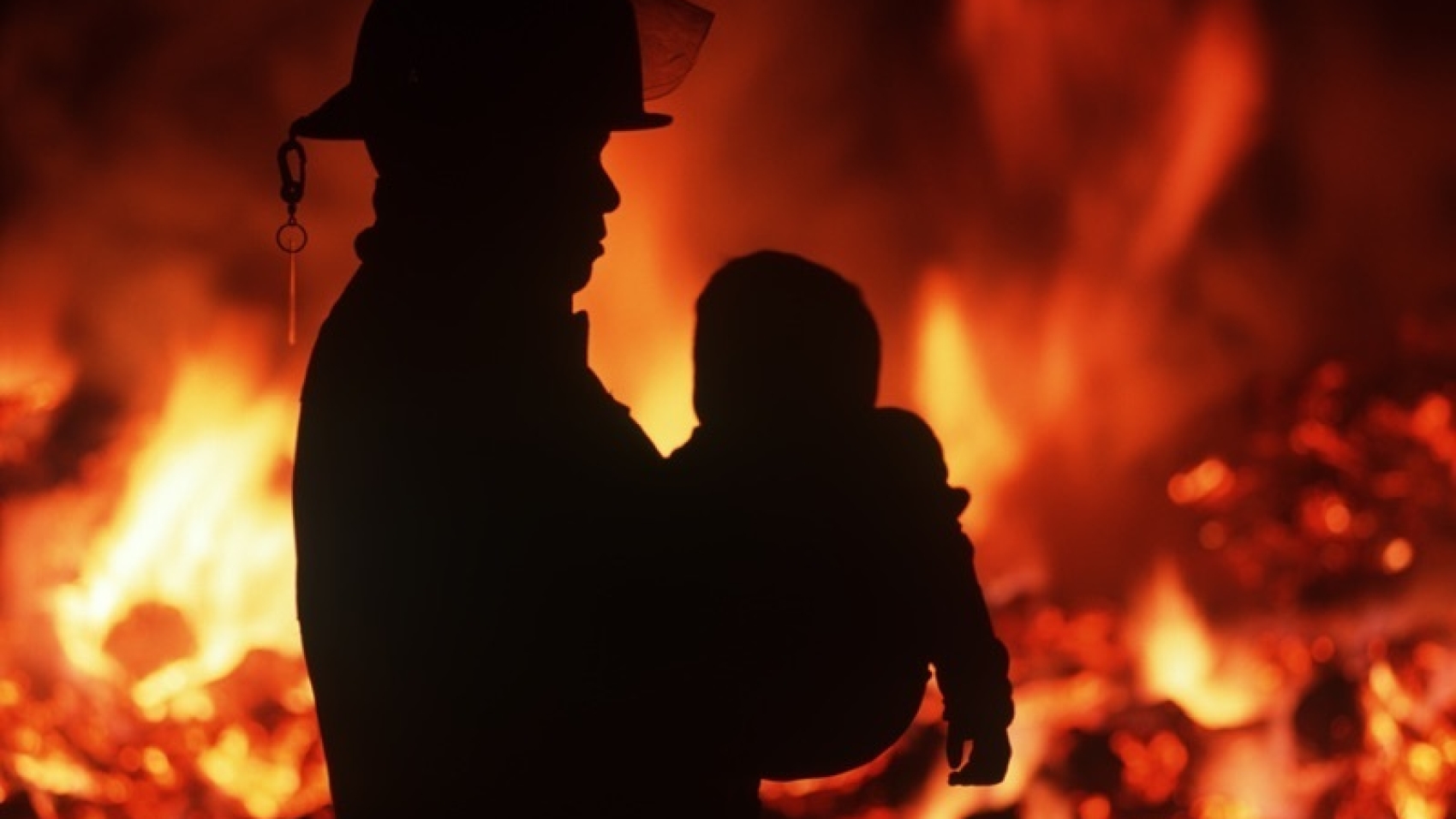Earth Rising: How the Pandemic is Breathing New Life Into the Planet
Today is Earth Day. And the Earth is smiling. It’s saying, look at my clear skies in cities known for industrial smog and air pollution as people stay home and fewer cars are on the road and fewer planes are in the sky. It’s saying, look at my waters running clearer than they have in ages. It’s saying, look at how animals are reclaiming their habitats. You can hear the birds singing in places that have heard only the sounds of traffic for eons. Look at how the hole in the ozone layer is closing. The economic slowdown has been hard for people, but look what it has done for the planet!
And then the smile stops. Earth says, can you see it now? Can you see how humans have created climate change? And can you see how this coronavirus, this Covid-19, is related to climate change?
Climate change matters. It’s as real as the struggle to breathe is for those suffering a bad case of the virus. The more we humans pollute the earth, the more the planet heats up, the more risk there is of pandemics. Recent decades, with a burgeoning human population and a more polluted earth, have seen more infectious diseases, most of which enter humans from animals. And since we live in a global community that travels far more readily than any previous time in history, these diseases are also globetrotters. And the density of humans living in cities makes for fertile ground for sharing an infected sneeze.
Cutting down large swaths of trees, especially deforestation of the Amazon (which acts as the lungs of the earth), changes animal habitats. When animals migrate, they share germs with other animals and people. When the forests in West Africa were cut down to grow palm oil trees, the bats that carried the Ebola virus lost their home and wound up transmitting the virus to humans. A virus that doesn’t harm its original host can turn into what we are seeing today with Covid-19, with projections of hundreds of thousands of human deaths.
Air pollution, a major factor in climate change, has been clearly shown to worsen the risk of pneumonia. Those who breathe dirty air have double the risk of dying from respiratory infections, as do smokers. Even the short-term decrease in greenhouse gas emissions as people around the world “shelter in place” has shown us what can be done if we stop using fossil fuels and harness electricity from wind and solar energy. Imagine what a major decrease in air pollutants we will have. Fewer heart attacks and stroke, less diabetes, fewer untimely deaths.
The U.S. spends over three trillion dollars a year on health care. By reducing air pollution, as well as eating less meat, stopping smoking, and exercising, we could pay fair wages to all workers, invest in education, take care of crumbling infrastructure, and make life a lot better for everyone. What we can’t afford is not to do anything about climate change.
As an energy healer, as a spiritual seeker, you know how energy works in a person. You can extrapolate that understanding to the way energy works on the planet, to seeing the connection between climate change and viruses. And today, on Earth Day, take a moment to send your thoughts, prayers, and meditations toward all of Earth’s inhabitants—its people, especially it’s health care workers, animals, and plants—that we may all work together towards a cleaner, healthier, lovely blue planet.
Light Pollution: What it Does to Your Body/Mind/Spirit and 5 Easy Ways to Reduce It
In 1994, just before dawn, an earthquake hit LA and caused a city-wide power outage. Many residents who ran out of buildings for safety called 911 to report a mysterious cloud overhead in what was an otherwise clear night. That cloud turned out to be the Milky Way, our own galaxy, hidden for many years by the city’s lights.
We try to light up the night sky for a simple reason: we humans don’t see very well in the dark. But where a little light is a good thing, too much light, or the wrong kind, negatively impacts us, causing a host of undesirable effects, most notably, breast cancer.
The 24-hour cycle, or circadian clock, affects physiologic processes in all living things. These processes include brain wave patterns, hormone production, cell regulation, and other biological activities. Disruption of that rhythm results in ill health, unhappiness, and angst at the soul level.
Melatonin is a naturally occurring hormone which is released in the dark and inhibited by light. While any light at night can interfere with its production, the short blue portion of the light spectrum suppresses melatonin the most.
Exposure to our artificially extended daytime in the modern world leads to sleep problems and sleep problems cause weight gain, stress, depression, diabetes, and cancer. The American Medical Association has recognized light at night as a carcinogen.
The excess light we create in our environment endangers all ecosystems by altering biochemical rhythms that normally ebb and flow with normal light patterns. Perhaps more importantly, we’re losing our connection to the night-time sky, a sky that our ancestors depended on for connection to the cosmos. We lose something essential, some part of ourselves, when we fail to connect to the dark sky and its planets and stars.
Though it’s not as dramatic as a chemical spill, light pollution now rates at the top of the list of chronic environmental issues. In 2016, reputable scientists reported that 99% of the United States and Europe experience light pollution. A third of the planet can no longer see the Milky Way and light pollution is increasing at the alarming rate of 2% per year.
Perhaps even more disturbing is the absence of awe when the night sky is no longer part of our lives. Philosophers have long written about the sacredness of the night sky and its impact on us; somehow a half-lit smoggy sky filled with light pollution just doesn’t take our soul to that place of wonder.
What can you do to preserve the night sky and your health and well-being? Here are 5 easy steps to take:
- Get new light bulbs. LEDs are great for saving energy (and money) but check to ensure that your bulbs are not using the blue-white spectrum. Find lower temp LEDs and compact fluorescents.
- Turn off blue light devices an hour before bedtime. That’s your TV, your iPad, your phone. If you use a reader, use an app that filters out the blue wavelength. That absence of blue light which normally would begin at sundown will allow melatonin to increase, which will lower your body temp, slow your metabolism, and increase leptin, the hormone that reduces appetite. (It was important for early humans that they didn’t get hungry in the middle of the night, because if you’re out foraging for food, you become food) Increased leptin levels play a role in avoiding cardiovascular disease, diabetes, depression, and cancer, especially breast cancer.
- Make sure your bedroom is completely dark. (Turn off the TV!)
- Turn off or shield outdoor lighting at your home.
- Talk to the governing agencies about light pollution in your area; be the one to spear-head a light ordinance or enforce the one already on the books.
Finally, if it’s been a long time since you’ve seen a truly dark night, make plans to go somewhere soon where you can. I spent the Thanksgiving holiday camped at Joshua Tree National Park and I can still feel the grandeur of that night sky. Try it for yourself, it will fill your soul.
Our Collective Future is in Our Collective Hands (What Part Will You Play?)
Here’s a scary thought: what if reincarnation is real and in your next life you will be living on a planet that’s been decimated by global warming? If you don’t believe in reincarnation, just think about what it’s going to be like for your kids/your siblings’ kids/your friends’ kids.
Cities you once knew and loved under water. No snow in Alaska. Even the mighty dollar couldn’t save Wall Street as lower Manhattan sank beneath the waves. Whole swaths of what was once farmland are gone, burned to a crisp by the unrelenting sun or swallowed up by rivers permanently overflowing their banks. Florida is a thing of the past. Category 6 hurricanes have leveled all the Caribbean islands, making them uninhabitable. Wildfires have destroyed the last remnants of California and the Rockies. Whole species have vanished. Drinkable water is scarce.
It’s an apocalyptic horror movie. And we see the early warning signs everywhere we look.
Scientists all say that the Earth’s climate is warming up. Glaciers are melting, causing oceans to rise. Your local climate might be getting colder winters with bigger snowstorms, while other places get torrential rains, or more powerful hurricanes, or unbearable heat.
The Earth’s climate is always going through changes over long periods of time. Some of those changes are natural. A volcano erupts and darkened skies cause cooling. But we humans are also changing the climate, and on a much vaster scale, with our cars and trucks, with our heating and cooling systems, airplanes, cooking, all through the use of fossil fuels: coal, oil and gas. And let’s not forget methane from cattle, another giant problem that comes from our outrageous demands for beef. The greenhouse gases that enter the atmosphere cause the air to heat up, and change the climate; we call it “global warming,” both locally and around the planet. Carbon monoxide, the main heat-trapping gas, stays in our atmosphere for centuries.
We still may be able to limit the worst effects of climate change, but only if we can reduce the amount of greenhouse gases going into the atmosphere, and by learning to adapt to the changes that are already in motion. And because it is an exceedingly complex global problem, we all have to agree to cooperate with each other. And to forego the pre-eminence of the profit motive over the welfare of humanity as a whole.
So what can you do? Each one of us needs to take a step a month. I just got solar. Maybe you can go for an electric car or plant a tree. Trees have an almost magical ability to pull carbon dioxide out of the air and capture it, and, in exchange, to release oxygen into the atmosphere. They clean up our mess and provide pure breathable nourishment. It’s the reason everyone was so horrified at the massive burn in the Amazon rainforest, which has been likened to the lungs of planet Earth, providing carbon offset and a source of clean air.
But did you know about The Great Green Wall of Africa? This initiative, along 6,000 miles at the edge of the Sahara desert, will eventually be the largest living structure around the world. The local population was facing the impact of climate change with long-lasting droughts, not enough food, and there was fighting over the remaining natural resources, so they decided to plant trees—a lot of trees. A decade after it was started, those trees are growing fertile land, providing food security for millions of people, refilling wells for improved water security, empowering women with new work opportunities, giving families green jobs with real incomes. Here, where temperatures are soaring upward faster than anywhere else on the planet, the Great Green Wall is a symbol of what can be done to support the Global Sustainable Development Goals.
Earlier this year, a million Indians planted 220 million trees in one day. A few years earlier, 50 million saplings were planted in a single day. Last year, China assigned 60,000 soldiers to plant trees in the province that circles Beijing, an area the size of Ireland, in hope of combatting some of the smog that frequently blankets the city. In the U.S., organizations like The Nature Conservancy are tackling climate change through natural solutions—growing trees, protecting grasslands, restoring wetlands, and improving agricultural practices and soil health.
There are so many ways to be part of the solution. Join me on Thursday, 10.24.19 at 2:00pm on Facebook Live to learn of other ways you can have a positive influence on the future of our planet, she’s all we have!
Help Save the Elephants
“Elephants cannot be manufactured. Once they’re gone, they cannot be replaced.” – Dr. Iain Douglas-Hamilton, Founder of Save the Elephants
You probably don’t remember the first time you saw an elephant. Was it on a TV screen, in a book or a magazine, or maybe at the zoo? You may have been a child with a stuffed elephant on your toy shelf or a pair of elephant-patterned sleepers. This iconic animal has been a part of human consciousness for millennia—think about the ancient Hindu god Ganesh, for example. Always believed to be highly intelligent as well as mighty in strength, elephants are not mythical beings like unicorns or dragons. Elephants are real, and they need our help desperately if we are going to keep them with us on planet Earth.
And we do want to keep them! Elephants are gentle giants, largest of all land animals. They play an important role in maintaining the biodiversity of the ecosystems in which they live. Both African and Asian elephants form female-led, tight-knit groups consisting of a dominant matriarch and her female relations plus their calves. Living in groups makes individuals safer and allows them to devote more time to caring for and teaching the young. Research shows that elephants have amazing long-term memory and can recognize themselves in a mirror, showing self-awareness. They understand what other elephants are feeling and comfort one another. They also assist other injured elephants, and even mourn their dead.
What makes elephants special in addition to their intelligence and self-awareness? Their amazing anatomy! Here are some details from the International Elephant Foundation: The elephant trunk serves as a nose, a hand, an extra foot, a signaling device and a tool for gathering food, siphoning water, dusting, digging and much more. Elephants don’t drink with their trunks, but use them as “tools” to drink with. This is accomplished by filling the trunk with water and then using it as a hose to pour it into the elephant’s mouth. Elephants can swim – they use their trunk to breathe like a snorkel in deep water.
And then there are the elephants’ precious tusks. Most precious to them, and they should be allowed to keep them! Both male and female African elephants grow long tusks. Tusks are actually elongated upper teeth embedded deep in the elephant’s head with up to a third of the tusk hidden from view. They have a variety of uses: as a tool to dig for food or water and to strip bark from trees; as a weapon in battles with rivals; and as a courtship aid. The tusks of elephants grow throughout their life and can weigh over 200 pounds.
Each year tens of thousands of elephants are killed for their tusks. Although people do care about elephants being killed in Africa, they may not be aware of the full story and the implications for world peace. Because of the high value of wildlife trafficking, organized crime and terrorist organizations have a stake in the black market operation that brings in billions of dollars and funds civil wars in Africa as well as global terrorism. According to former Secretary of State Hillary Clinton, “Stopping poaching is no longer only about protecting the planet’s natural resources. It is also a national security issue, a public health issue and an economic security issue.” The Elephant Crisis Fund proposes using “the best ideas and actions from a diverse coalition of effective leaders, non-profit organizations, institutions, media, scientists, and governments.”In other words, it will take a village, a global village, to solve the elephant crisis.
Ironically, one of the most popular elephant stories of all time is Jean de Brunhoff’s children’s book The Story of Babar (1931) which begins with Babar the baby elephant being orphaned by hunters. Today, aid organizations are working to protect the animals from poachers while keeping their natural habitat intact—no easy matter. In fact, this crisis of existence for the elephant is a spiritual crisis for humans. While some humans are destroying, others are choosing to protect.
You may remember another classic children’s book, an elephant tale which portrays the heroic efforts of Dr. Seuss’s Horton to save an entire civilization. “I meant what I said, and I said what I meant. An elephant’s faithful 100 per cent!” are Horton’s words to all the naysayers who don’t think his mission is possible. Horton’s efforts defined his noble spirit, just like our human spirit must grow and be defined by our effort to defend and protect our planet’s most at-risk members.
For more information on elephants, check out my newest course.
Endangered Species: What it Means for Us
“Blessed are those who love animals, for they shall preserve the Earth.” I’m misquoting the Sermon on the Mount for a really good cause. Environmental protection looms large in our minds right now due to the extreme threat our planet faces from climate change and the missteps we humans continue to make. Whenever we think of protecting our planet, we also need to think of the other sentient beings who have something at stake. We are not alone. We live here with an incredible array of other life forms whose existence also hangs in the balance. And their welfare impacts ours in every way.
Our natural world is a complex interconnected system of human, animal, and plant life. We now know that the health and well-being of animal and plant populations reflect the quality of the environment we share. Think canary in the coal mine. We function with the millions of other living species on our planet as part of a finely balanced system. The loss of any single species can create a ripple effect that will eventually touch all of us.
The ecosystems of the earth function smoothly because of biodiversity—the full array of diverse life forms that populate our planet. Biodiversity, it turns out, is critical to ending poverty and promoting shared prosperity for the millions of people who depend on nature for their livelihood. When species disappear or fall in number, ecosystems and people suffer—especially the world’s poorest. We can’t know how valuable a species of animal or plant may be for us in the future. Everything is connected. When we protect endangered species, we also protect the ecosystems that permit us to live.
Naturalist and author Paul Rosolie writes about the urgent importance of preserving endangered species, “Wild animals keep our world alive. Without them, there is no us.” We don’t want to find out what the world would look like without our fellow creatures, and yet the problem of disappearing habitats and dwindling animal populations continues to grow. Just two months ago, the world’s last male northern white rhino, “Sudan,” died, leaving only two females left. Among other endangered animals are tigers and other big cats, elephants, gorillas, sea turtles, black rhinos, blue whales, and whooping cranes, to name the most widely known. There are many other endangered species within more localized habitats. Maybe you even know of some close to where you live.
“The appreciation of wildlife goes beyond merely what they have given us,” says Rosolie. “Wild animals have their own inherent value, their own reasons for existing. There are many species capable of making tools, sharing innovations, and having complex thoughts and emotions. They, like us, have families, endure struggles, feel pain, experience joy, and even play with one another.” I know you can testify to the truth of Rosolie’s words. Recently, I saw a heartbreaking photo of orphaned baby elephants wearing small blankets on their backs. Placed there by animal aid workers, the blankets were meant to simulate the feeling of their mother’s trunk draped over them for comfort and protection. These babies were not orphaned by Nature, they were orphaned by us.
We humans are now the dominant population on planet Earth with numbers greater than 7 billion. How have we been treating our fellow inhabitants? You may have heard the term “sixth extinction” coined by scientists as an expression of how rapidly species and ecosystems are vanishing under our watch. Humans of an earlier era did not have the scope of knowledge we have about our planet and its complex workings—and the delicate balance of life. With our increased awareness comes increased responsibility and the need to take action. We can work to reverse the ongoing damage. We don’t want to find out what it would mean for us if wildlife becomes extinct.
“Blessed are those who love animals, for they shall preserve the Earth!” What we love we protect. People around the world are working to help save endangered animals from extinction. Conservation organizations like the World Wildlife Fund, Defenders of Wildlife, Project AWARE Foundation, the Jane Goodall Institute and many others work to increase public awareness of the problems facing endangered animals, and by association, all living creatures. Opportunities to support the cause of animal welfare are global and local. You can help save creatures great and small, far and near—from the elephants in Africa to the local wildlife in that nature preserve your city is working to create. Every loving action counts. For more information on animals and what you can do to help save them, check out my newest course.
Earth Day: No Shortage of Terrifying Topics
Today the environment is on everyone’s mind and ominous reminders why just keep coming. Earth Day only brings it all above-the-fold for the day, so I’ll briefly touch on three everyday topics that deserve our everyday attention. There is no shortage of things we could talk about.
Until the late 20th Century, few of us thought much about the environment. There weren’t many headlines about the health – or lack of it – of the planet. Oh, how things change – and in a hurry! Cleveland’s Cuyahoga River caught fire after years of chemical waste dumped into it; in 1969, Southern California’s pristine coast suffered a catastrophic oil spill of three trillion gallons killing thousands of birds, fish and sea mammals; and Rachel Carson published Silent Spring, the deadly truth of pesticides was addressed as never before.
The environment and our future became topics no longer reserved for academics, it was everyone’s business. In response to it, Senator Gaylord Nelson of Wisconsin and U.S. Representative Pete McCloskey of California organized the first annual Earth Day in April 1970. Now, almost 50 years now, April 22nd is official Earth Day, marking the anniversary of the modern environmental movement.
Earth Day goes beyond politics despite vastly different red and blue narratives. Regardless where you fall on the political spectrum, everyone should be concerned about how our activities impact the land, sea, and air. The price paid isn’t like the national debt left to our children and grandchildren. We’re paying the environmental price today and it should send chills down everyone’s red or blue spine.
Here are three examples of how serious things have become. If the trend continues as expected, consider how bad things could get, how concerned we should be, and why Earth Day 2018 should be the year we all draw the line in the polluted sand.
Weather – It Really is Different
Climate change isn’t about the weather in a vacuum. Weather isn’t an argument for or against climate change, the issue is violent weather and extremes we’ve never witnessed before. It’s not imagination but fact and getting worse. https://www.scientificamerican.com/article/extreme-weather-will-occur-more-frequently-worldwide/
In the past year in the United States, we’ve seen it in three areas:
First, it’s a fact that every Hurricane Season is more severe and the storms more catastrophic. What happened last fall in Texas, the Caribbean, and Florida from Harvey and Maria, leave no doubt. Eight months later, power still hasn’t been completely restored in Puerto Rico. People are justifiably nervous about the next Hurricane Season.
Drought has been so severe and lasted so long that fears of tinderboxes burning out of control have become the horrific truth. Fires in the Western U.S., in California, Oregon, and Washington, were the worst ever seen. Concerns about this year’s season are real, and drought in the Midwest and Southwest make those residents fearful and for good reason. And the aftermath may be as bad or even worse; heavy rains devastated Santa Barbara with mudslides after fires burned hundreds of thousands of acres.
This past winter’s blizzard bonanza set records across the country. Big storms, deep snows, more storms, and they just keep coming. It’s now mid-April and Major League Baseball has seen snow-covered baseball diamonds and dozens of snowed-out games.
Plastics and the Oceans
How bad is it? Estimates are that by 2050 there will be more plastic in the ocean than fish. Currently, we are dumping the equivalent of one garbage truck full of plastic into the ocean every minute. 8 million tons of plastic every year.
The damage goes far beyond ruining beaches and harming marine life; plastic is becoming a permanent part of food chains and ecosystems breaking down into dangerous micro-plastics and tiny particles that absorb chemicals. These micro-plastics have made their way into ecosystems as remote as the Arctic Sea.
This Earth Day will educate millions about the health and environmental risks that come with plastics, including pollution of our oceans, water, and wildlife, and about the growing evidence that decomposing plastics creating serious global problems threatening our survival. We can take a stand by choosing to reject, reduce, reuse and recycle plastics and promote government regulation to tackle the problem. Here’s a link to learn more: https://oceanconservancy.org/trash-free-seas/plastics-in-the-ocean/
Fracking is More a Problem Than a Solution
Hydraulic fracturing, commonly known as fracking, is a drilling technique used for extracting oil and natural gas from deep underground. Shale oil and natural gas production is big business. The question is whether it’s good business, sustainable business, or socially responsible business.
For years, its advocates have assured us it’s a safe and economical way to extract clean energy. In recent years, we’ve seen the truth: drinking water contaminated with chemicals, fires that vent directly into the atmosphere, increased air pollution, and wholesale erosion and destabilization of the earth triggering earthquakes.
Proponents point to fracking’s benefits. It has created jobs that have rescued dying towns and regions, and, at least temporarily, reduced dependence upon foreign oil and lowered prices at the pump and for heating oil. These are short-term fixes and short-sighted thinking because the long-term damages are forever. Even worse, fracking delays development of sustainable and more responsible solutions.
“Oil is a rental business…When the industry goes south — and it will go south — they just walk away.” ~Dan Kalil, Chairman of the Williams County Board of Commissions in North Dakota, where shale oil and gas production has been an economic boon.
Walking away is the point, after all. We can’t just walk away to Mars.
Confronting our environmental future by facing the truth is what Earth Day has been about for nearly half a century.
I invite you to commit to Earth Day this year as never before:
- Contact Congress and demand that the EPA be put back to work protecting the environment.
- Donate to the environmental cause of your choice.
- Find ways to volunteer.
It matters more than ever before.
We'd love to read your comments
We Are the Land
One of the concepts central to Native American beliefs is the principle that “we are the land.” Woven tightly into many aspects of Native American life and spirituality, this fundamental idea goes beyond being close to nature or seeing the world through an environmental lens. The American Indian dogma of “we are the land” centers around the belief that the Earth is the mind of the people and the people are the mind of the earth. It is impossible to separate the two and our destiny can’t be isolated because the Earth is a part of our being and a reflection of ourselves.
“We are the land” is not a romantic analogy meant to convey that one is a “nature lover” or “close to nature;” rather, it means that we are literally the same being, composed of the same connections and consciousness that ties the roots of the Earth to the roots of human bodies and minds. Just like the base chakra, if these roots are not grounded, it is impossible to create connections with the world around you. Because we are one and the same, everything is sacred and must be honored, loved, and respected. From mountains and oceans to honeybees and flowers, all living things are made up of the same five elements: earth, water, fire, air, and space.
Wakan Tanka
Native American Indians see nothing standing between them and Wakan Tanka, which can be loosely translated as the “Big Holy.” Wakan Tanka is not a god of punishment, but the ruling power of Good.
At the time of creation, the Creator to the Native People gave these sacred instructions:
- Do nothing to pollute our Mother, rise up with wisdom to defend her.
- Show deep respect for the mineral world, the plant world, and the animal world.
- Treat the earth and all of her aspects as your mother.
- Take full responsibility for your actions.
- Be truthful and honest at all times.
- Dedicate a share of your efforts to the greater good.
- Look after the well being of mind and body.
- Do what you know to be right.
- Give assistance and kindness wherever needed.
- Work together for the benefit of all Mankind.
- Show great respect for your fellow beings.
- Remain close to the Great Spirit.
- Treat the Earth and all that dwell thereon with respect.
Everything is a part of us, and we are a part of everything – complete unity. Indigenous oral traditions passed down through generations preach the need to be humble in the face of Mother Nature, a wise mindset indeed. In fact, it would do “modern” society good to take a page out of the “we are the land” guidebook; by completely ignoring its directives, we continue to treat the Earth as an owned asset in a capitalist race to the bank. So far, we have polluted the air with harmful industrial emissions, poisoned the land with pesticides, and contaminated the water with chemicals. We have unleashed the destructive power of uranium by mining it and making bombs that are capable of complete annihilation.
By living close to the land, the First People understood the natural laws that govern the elements and knew it was wrong to dig up powerful substances buried deep within the Earth. Today, we live in a state of constant disconnect – from the Earth, our bodies, the beating heart of the All – and are finally being forced to face the consequences of years of disrespect to the laws of nature: massive superstorms and extreme climate changes unleash wind, fire, and flooding on an unprecedented scale.
Possibly the most important lesson we can learn from Native elders is the idea of harmony, that is, living in relation to the earth, the sky, the animals, the spirits. When you are dedicated to maintaining harmony – both within yourself and in your outside world – you are walking on what the Native traditions call the “path of beauty.”
To walk the Earth in harmony, in balance both within yourself and externally in the environment, requires purification to correct any discordance or “dis-ease.” You need to heal wherever you have not followed the natural order of life on Earth.
The Navajo “blessingway” teachings lay out this natural order in the four cardinal directions:
- East is the sunrise, the season of spring and new growth, when a child learns spiritual and moral standards.
- South is noon, the season of summer, when a youth receives an education and starts to work.
- West is sunset, the season of autumn and harvest, when the parent maintains the family and home, and becomes the storyteller and conducts ceremonies.
- North is midnight, the season of winter and endings, when the grandparent reflects on the Self, and teaches reverence for the natural order and how to restore resources and maintain the right relationship to the elements.
In the Center of the natural order is the hearth, informing all the directions through the central position of spirit and love.
Our modern tradition is radically different, comprised of competition, plunder, and despair. When you walk in harmony with all of the creation, you feel your connection to everything and everyone around you. You don’t plunder the resources of Earth or rape her for your own pleasure. You don’t strive to be or have more than anyone else. You live in the love of harmony and community, not the despair of failure, separation, isolation.
Walking in Beauty is the closing prayer from the Navajo Blessingway Ceremony, the main healing ceremony that is designed to bring forth positive blessings and prevent bad things from happening.
Walking in Beauty
With beauty before me I walk
With beauty behind me I walk
With beauty above me I walk
With beauty around me I walk
It has become beauty again
Today I will walk out, today everything negative will leave me
I will be as I was before, I will have a cool breeze over my body.
I will have a light body, I will be happy forever, nothing will hinder me.
I walk with beauty before me. I walk with beauty behind me.
I walk with beauty below me. I walk with beauty above me.
I walk with beauty around me. My words will be beautiful.
In beauty all day long may I walk.
Through the returning seasons, may I walk.
On the trail marked with pollen may I walk.
With dew about my feet, may I walk.
With beauty before me may I walk.
With beauty behind me may I walk.
With beauty below me may I walk.
With beauty above me may I walk.
With beauty all around me may I walk.
In old age wandering on a trail of beauty, lively, may I walk.
In old age wandering on a trail of beauty, living again, may I walk.
My words will be beautiful…
Heal and Live in Harmony
Today we fail to invoke the sacred. We seem to be counting on technology to fix the problems we have created: a machine to collect all of the plastic littering our oceans; better detection systems to warn when hurricanes, fires, tornadoes, and tsunamis are approaching; slightly less harmful pesticides and herbicides; a way to inject the CO2 we have emitted into the atmosphere back into the ground. Compare these short-term solutions to what the elders are trying to teach us: new scientific discoveries will not necessarily be the change that leads to the betterment of all living beings.
What is needed is a change in attitude – a change in awareness.
It is only when we understand and live the true meaning of unity that we will bring our inner lives into harmony and heal our “dis-ease.” When we learn humility and stop treating our Mother Earth like a personal treasure chest to fund our every whim and desire, will we recognize a change in attitude. Coming into balance with all living beings and respecting their right to be here as much as our own will reflect a change in awareness. When we stop thinking we are safe and secure from the consequences of our own actions, then, and only then, will we be getting down to the root cause rather than simply treating the symptoms. Then, and only then, will we too walk in beauty.
Up in Smoke
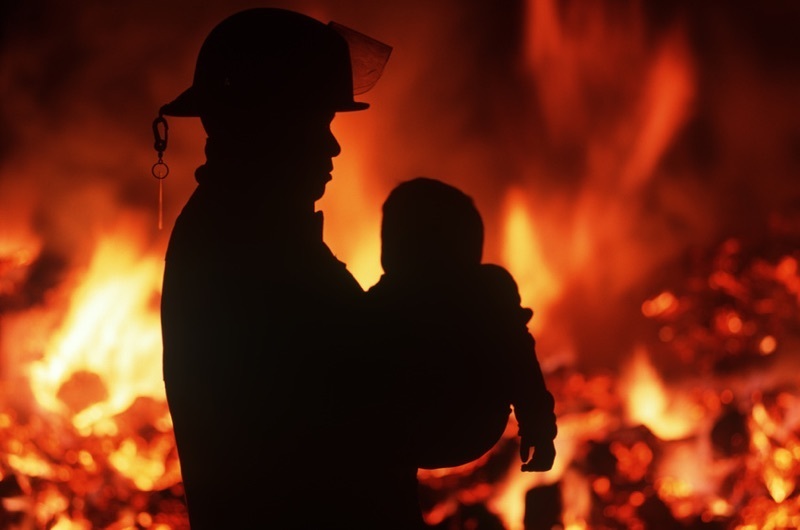
Three hundred square miles of California is burning. I’ve lived here my whole life and I’ve never seen a fire like this one, with over 3,500 homes destroyed and dozens of lives lost. I know what it feels like to have to evacuate, to get away from the smoke that fills your lungs and chokes you, to wonder if you will have a home to return to. Imagine losing everything—every “thing” you possess: your clothes, your photos, your electronics, your furniture, everything from your toothbrush to your car gone up in smoke. It can happen not only from fire gone wild, but also from water and wind, as in Puerto Rico, or Texas, or Florida. And you don’t need much of an imagination to understand that these superstorms are no longer rarities, but are what we can expect to happen with more frequency and ferocity.
Mother Earth is not happy with what we have done to her and isn’t going to take it lightly any longer. We have heated the planet, changed the ecology, poisoned her component elements of sea and sky and land, destroyed her biodiversity, and set ourselves on a catastrophic course of destruction. What can you do about it?
Passing through an area in northern California, on one side of the road I saw the smoldering remains of a forest fire; on the other side I could smell the smoke from another fire, mostly homes, that was still not contained. Californians know all about the autumnal “fire season.” But these aren’t the usual wildfires, so common at this time of year. My home state is in flames, with over 21 fires burning and the wind coming up again today. The fear is that these fires will merge into major infernos that cannot be contained.
The Atlas Fire is still scorching Napa Valley’s cherished wine country, and the huge Tubbs Fire has taken out whole neighborhoods in Santa Rosa. Entire towns are potentially in the path of walls of fire and are being evacuated. Tens of thousands of people have had to flee the flames that are hungrily gobbling up thousands of homes and businesses, forests, and the lives of at least 23 people (with numbers sure to rise). GoFundMe appeals are already online to help families who have lost literally everything. The Diablo winds (known as the Santa Ana winds in southern California) are fiercer than ever, hampering efforts of thousands of weary firefighters as the winds blow fiery embers flying over a mile. These hot dry winds, which pick up at night, can reach almost hurricane-type strength; Sonoma County recorded winds at 79 m.p.h.
We are seeing this new breed of unnatural “natural” disaster everywhere. Floods in Texas. Hurricanes in Florida and the Caribbean islands. Fires in the West of the US. No matter how many “deniers” there are out there, scientists agree: climate change is a major factor. We were warned that climate change would produce superstorms, and here they are. The pictures of California after the fires look like the ones from Puerto Rico – total devastation. And who knows what kind of mayhem the next winter will bring?
California has some of the most potentially dangerous severe fire weather in the U.S. Wildfires are fed by dry air, high winds, and low humidity. This past summer broke the records for heat. More exceptional heatwaves and more severe droughts set the stage for more intense fires. Even those heavy summer rains couldn’t alleviate the effects of five years of drought and provided lots of new growth for kindling. In Texas, Florida, and the Caribbean, hotter gulf and ocean waters made for bigger and more severe hurricanes.
A 2012 study1 published in the journal of the Ecological Society of America, found that climate change will produce “as much as a fourfold increase” in wildfires as the Northern Hemisphere warms, with fire even reaching the Arctic, which will grow more plants capable of burning as the frozen northlands thaw. And the Gulf jet stream, also affected by climate change, isn’t delivering enough moist air and rain from the Gulf of Mexico north into the U.S. mainland. Forests absorb some of the carbon dioxide that comes from burning fossil fuels, which then leads to more warming and therefore more wildfires. More intense winds from storms (witness this year’s hurricanes) knock down “slash fuel,” the fallen branches that provide kindling to forest fires; chaparral scrublands contribute to deadly crown fires.
And the size, severity, and frequency of these fires are increasing over the years. The “wildland-urban interface” (WUI), as the U.S. Forest Service calls the places where homes have been built in what used to be wilderness, directly impacts wildfires and requires more resources to fight them. As of a 2010 study 2, almost 44 million houses were in the WUI, especially in California, Texas, and Florida. Houses are encroaching on once pristine natural landscapes, and lives are in danger. The fires that are still raging can shift direction at any time, giving people barely moments to escape the onslaught and the sheer terror of being burned alive.
What does the future hold? When will the consequences of ignoring climate change be acknowledged and acted upon?
As a spiritual teacher, I have to speak out. The time has come when we all have to take action. Especially since we are in the grips of a government intent on destroying what small efforts we have made toward protecting our environment.
Are you passionate about saving the environment—the air, water, soil, plants, animals, and people that make up life on earth? What can you do? You can offset your carbon footprint. You can power your home with green energy. You can support any of the more than 170 organizations in USCAN, the U.S. Climate Network. You can drive an electric or hybrid car. You can eat less meat (which uses the most resources to produce). You can light your house with LED light bulbs that use 80% less energy. You can follow the U.N. guidelines for climate action. Most of all, you can speak up. Learn the facts about climate change and share them on social media. Call your elected local, state, and federal representatives to get them moving in the direction of tackling this huge problem before it’s too late.
This article was originally published on the Huffington Post.


